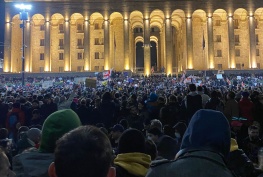When looking at photographs of Pittsburgh from the 1940s, it’s hard to distinguish day from night.
The smog coming from the steel plants totally covered downtown, darkening with dust its historic buildings, trees and residents. Locals still recall stories about office workers whose white shirts were so darkened by dust from the air that they had to change them with the fresh ones in the afternoon.
This was a time of industrial boom in Pittsburgh, then widely known as the Steel City. But it was also a period of environmental disaster.
The city started its “smoke control” program in 1950s. But real change only happened in 1970s, when the steel plants started to close. Pittsburgh became cleaner because many of its polluters ceased to exist.
While many might disagree, I believe the city was lucky to get rid of the steel industry.
Thousands of people lost their jobs and left the city. The population shrunk by half. But those who remained witnessed a gradual but remarkable return of sunny days, fresh air, and fish in the rivers.
When workers washed the black dust from the old churches, people saw clearly the architectural beauty of their city. The big industrialists of the 19th Century, including Andrew Carnegie, Andrew Mellon, Henry Clay Frick and Henry J. Heinz, invested in the city along with their own enterprises. They exploited workers but also donated money for culture and education.
Thanks to the industrialists, Pittsburgh was lucky to acquire museum collections and build theaters, universities, concert halls and other cultural attractions in considerably higher number that in other American cities of equal size.
Eventually Pittsburgh began to revive, thanks to new businesses, including those dealing with finance, computer engineering, education and health.
Pittsburgh wasn’t much affected by the economic downturn that began in 2007, unlike other American cities. Moreover, the city became a good option for many people seeking a comfortable and affordable place to live after the recession.
Since 2009, Pittsburgh has experienced a positive migration trend and its unemployment rate is expected to hit the historic low of 4.1 percent in 2016, an annual report called Pittsburgh Today and Tomorrow estimated.
Abandoned historic houses are getting revived in Pittsburgh and surrounding areas. Young adults, the so-called generation of millennials, are renovating entire neighborhoods.
The mood of revival is felt everywhere in the city, which has become a site for the newest trends in environmentally friendly construction. Pittsburgh’s downtown will have the “greenest” skyscraper ever built, with natural air ventilation, solar heating and recycled furniture, when the building is finished this fall. And the views, they will be clear.





